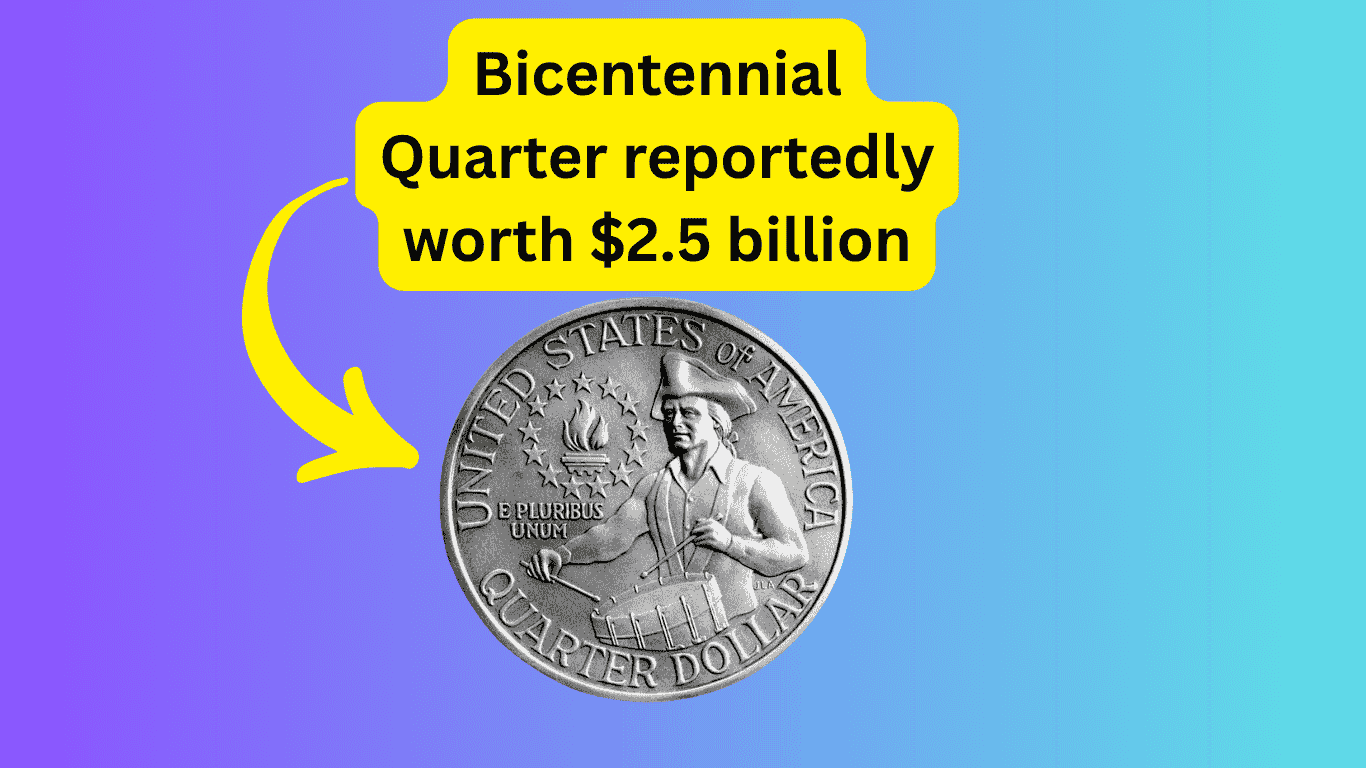In a world of rare coin discoveries and skyrocketing collectibles, one particular piece is capturing global attention in 2025 — the Bicentennial Quarter reportedly worth $2.5 billion. Yes, you read that right. A single 25-cent coin potentially valued at more than the GDP of a small country.
But is this shocking claim legitimate or just another viral myth circulating online? Let’s dive into the truth, explore why Bicentennial Quarters are so special, and uncover what really makes a coin worth millions — or even billions.
What Is the Bicentennial Quarter?
Before we talk about billions, let’s understand the basics. The Bicentennial Quarter was issued in 1976 to commemorate the 200th anniversary of the United States’ independence. Instead of the usual eagle, the reverse features a unique design of a Colonial drummer with a torch of victory encircled by 13 stars. The obverse still shows George Washington, but with the dual date “1776–1976.”
This special design was part of America’s first modern commemorative coin program and was minted in huge numbers. Over 1.6 billion quarters were struck between the Philadelphia, Denver, and San Francisco Mints.
Why Are Some Bicentennial Quarters Worth a Fortune?
Not all Bicentennial Quarters are valuable. In fact, most are still only worth 25 cents. However, rarity, condition, errors, and metal composition can dramatically boost a coin’s worth.
Here’s what makes some of them valuable:
- Proof and Silver Varieties: Some quarters were made in 40% silver for collectors. These are usually more valuable than standard copper-nickel versions.
- Minting Errors: Coins with double strikes, missing elements, or misalignments are rare and highly sought after.
- High-Grade Coins (MS67 or higher): Professional Coin Grading Services (PCGS or NGC) assign grades. A flawless, uncirculated coin with a grade of MS68 or above is extremely rare.
Tip: If you have a Bicentennial Quarter that looks unusually shiny or has any strange markings, get it appraised by a certified grading service.
The $2.5 Billion Bicentennial Quarter: Real or Exaggeration?
Let’s be honest — no U.S. quarter has officially sold for $2.5 billion as of 2025. The number seems to have originated from viral social media posts and exaggerated online claims designed to spark curiosity and clicks.
However, some Bicentennial Quarters have sold for thousands, and a few examples — particularly those with ultra-rare errors or perfect grades — are considered priceless among collectors.
Most expensive known Bicentennial Quarter sales (realistic figures):
- 1976-S Silver Proof PR70DCAM – Sold for around $4,000
- 1976-D MS68 – Fetches between $3,500–$6,000
- Error Quarters with Double Dies – Up to $8,000 depending on condition
Fact Check: As of mid-2025, there is no public auction record or verified private sale that supports the $2.5 billion claim.
What to Do If You Think You Have a Rare Bicentennial Quarter
Got a 1976 quarter in your drawer? It might be worth checking!
Follow these steps:
- Look for Mint Marks
- “D” for Denver
- “S” for San Francisco (often silver)
- No mint mark = Philadelphia
- Check the Edge
- A silver edge with no copper lines indicates a 40% silver coin.
- Inspect for Errors
- Use a magnifying glass. Look for doubling, misaligned strikes, or missing elements.
- Weigh It
- Silver quarters weigh more (~5.75 grams) than copper-nickel ones (~5.67 grams).
- Get It Graded
- Use PCGS or NGC to determine condition and authenticity.
How Rare Coins Gain Value in 2025
The coin-collecting world is booming again in 2025, fueled by:
- Online auction platforms like Heritage Auctions and eBay
- YouTube and TikTok influencers showcasing rare finds
- Rising interest in tangible assets amid digital market volatility
Collectors are now willing to spend big on ultra-rare coins with proven provenance and third-party grading. So while $2.5 billion may be exaggerated, six-figure coins are very real.
Key Traits of Valuable Bicentennial Quarters
Here’s what makes a Bicentennial Quarter stand out:
| Feature | Value Potential |
|---|---|
| Silver composition (40%) | Medium to High |
| Proof coin (S Mint) | Medium |
| MS67–MS70 condition | High |
| Unique mint errors | Very High |
| Certified by PCGS/NGC | Increases credibility |
Don’t Fall for Online Myths
A lot of “$2.5 billion quarter” buzz comes from clickbait headlines and AI-generated misinformation. Always check auction records and consult professional numismatists before making assumptions about value.
Warning: Be cautious of scam websites claiming to buy your quarter for millions. Always go through trusted dealers or verified auction houses.
While the $2.5 billion Bicentennial Quarter may be more myth than reality, the truth is still exciting. Some 1976 quarters can indeed be worth thousands — if they’re rare, in pristine condition, or contain unique errors.
If you suspect you own one, don’t toss it into the tip jar. Get it evaluated — and who knows? You might just be holding a small fortune.
FAQs
Q1. Is the $2.5 billion Bicentennial Quarter real?
No. There is no verified record of a Bicentennial Quarter selling for $2.5 billion. It’s a viral exaggeration, though some rare versions have sold for thousands.
Q2. How can I tell if my Bicentennial Quarter is silver?
Check the edge. If it lacks the copper line and looks solid silver, it could be 40% silver — especially if it has an “S” mint mark.
Q3. Where can I sell a valuable Bicentennial Quarter?
Use platforms like Heritage Auctions, GreatCollections, or eBay, or contact a certified coin dealer or local numismatic society for appraisal and selling assistance.

